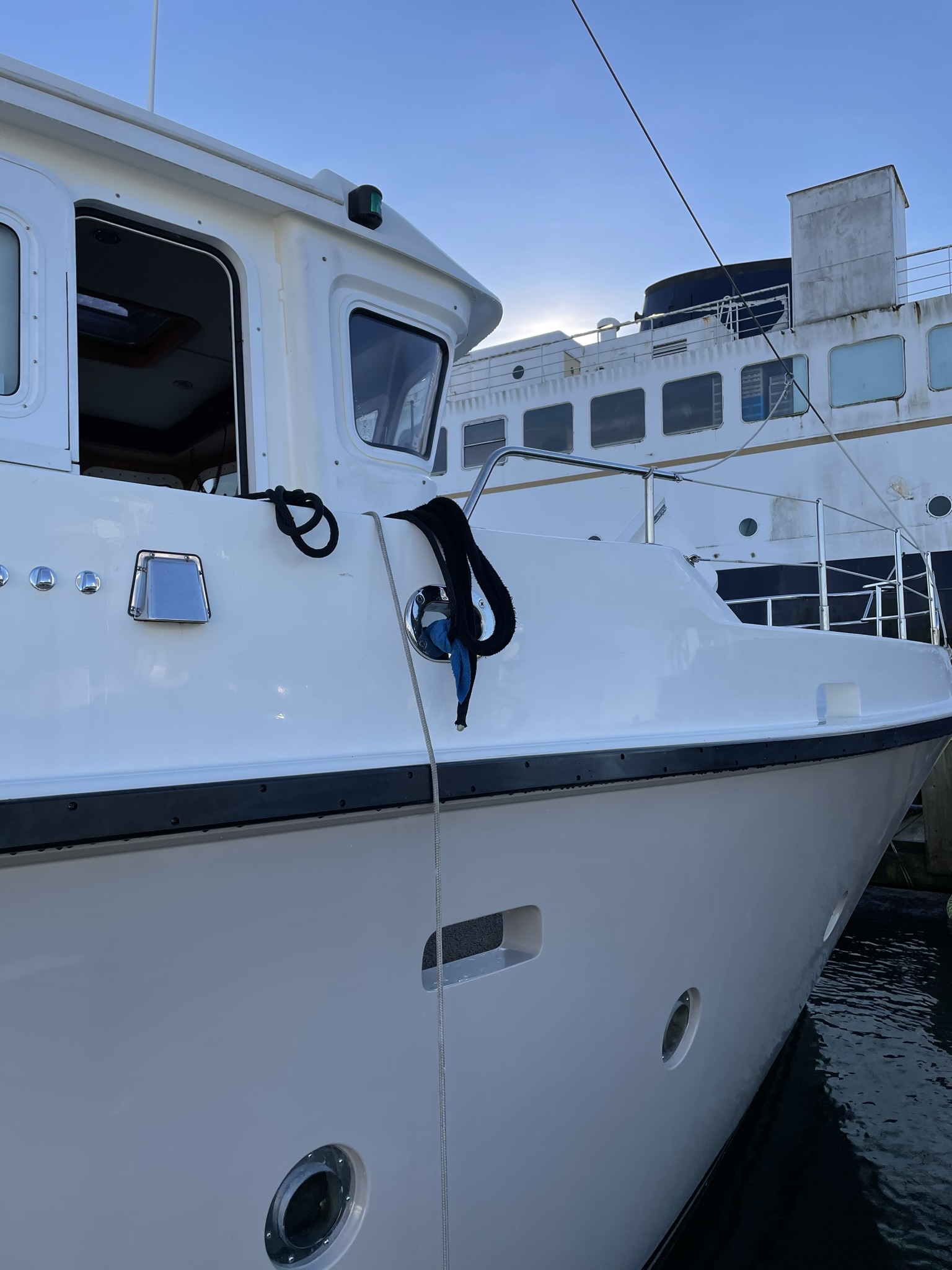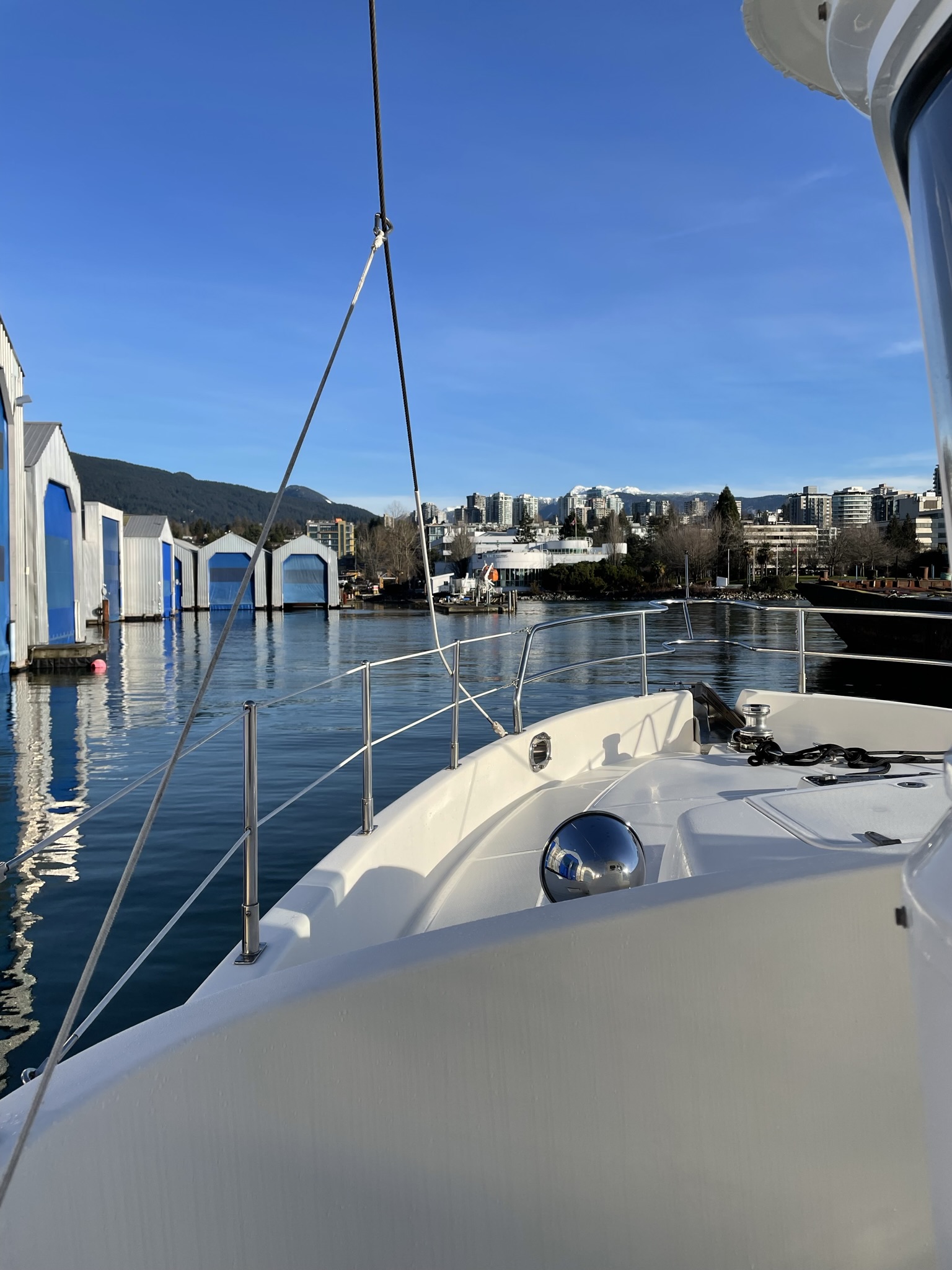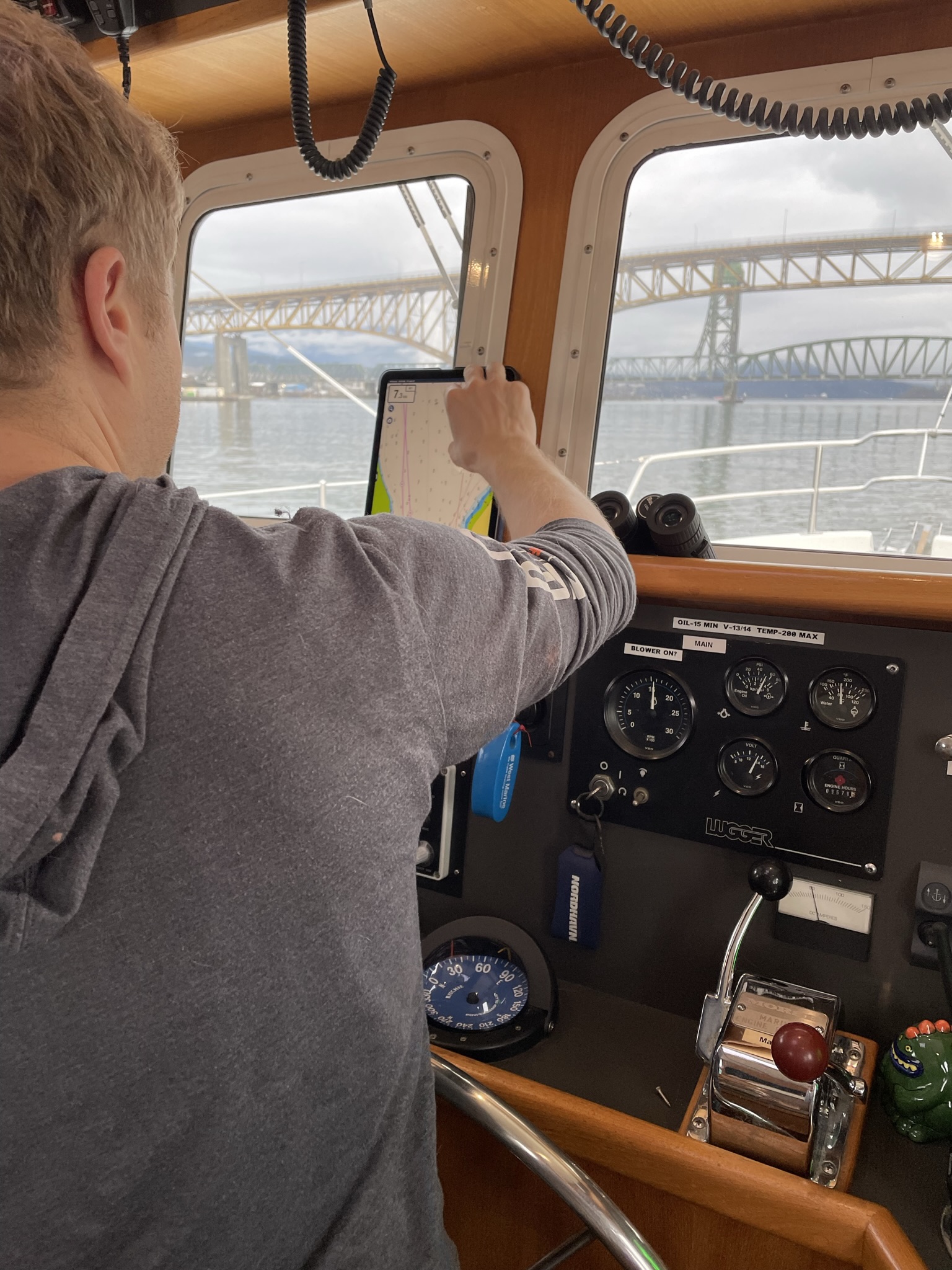I want to share a breakdown of what goes into a typical boat day for us. I’m new to boating, and I was a bit intimidated at first by how much there is to do, but now that we’ve done it a few times it’s actually not so bad.
First is pre-trip planning. This starts well before the trip, as soon as we know what day we are planning to head out. We start checking the weather, wind conditions, tide schedule and currents. We have established some go/no go conditions based on our boat and our comfort levels. Any winds over 25 knots, fog (low visibility) or currents greater than 3 knots against us mean we don’t go. Depending on the route, we also want to know what the tide will be doing. Any narrow passes should be transited at slack tide if possible, and we also want to know what the water levels will be, in case any areas become unpassable during low tide. Eudora draws 6 feet, so we avoid any waters that are les than 15 feet deep, just to be on the safe side.
The chart below shows the currents at the narrowest part of our cruise, the second chart show the wind and wave conditions. We use both of these tools to help with trip planning. For our last cruise, based on the weather, tide and destination, we decided to leave the dock at 08:45 so that we could transit the narrowest part of our course at the most favorable time for tide and current, and we managed to nail the timing very well.
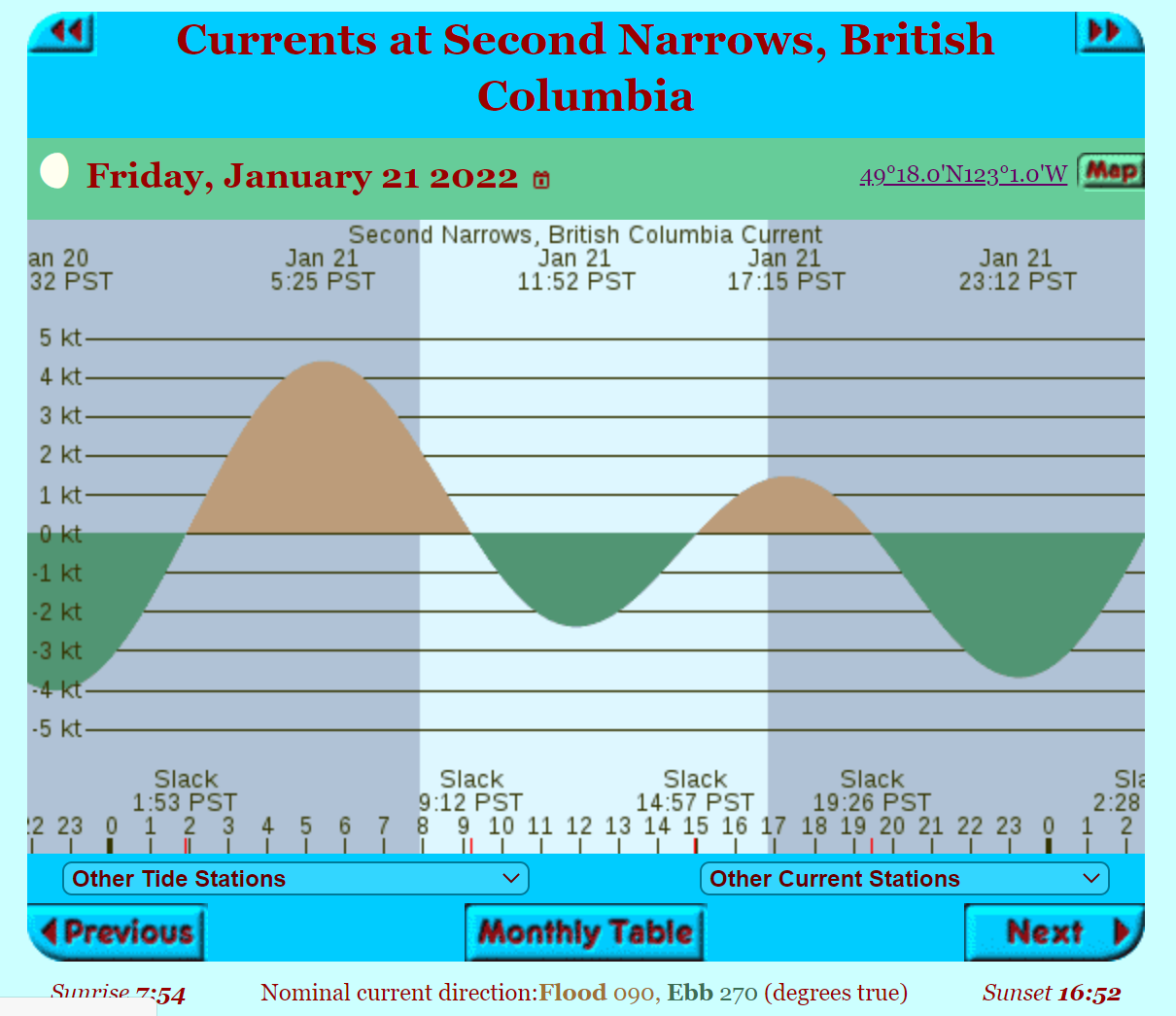
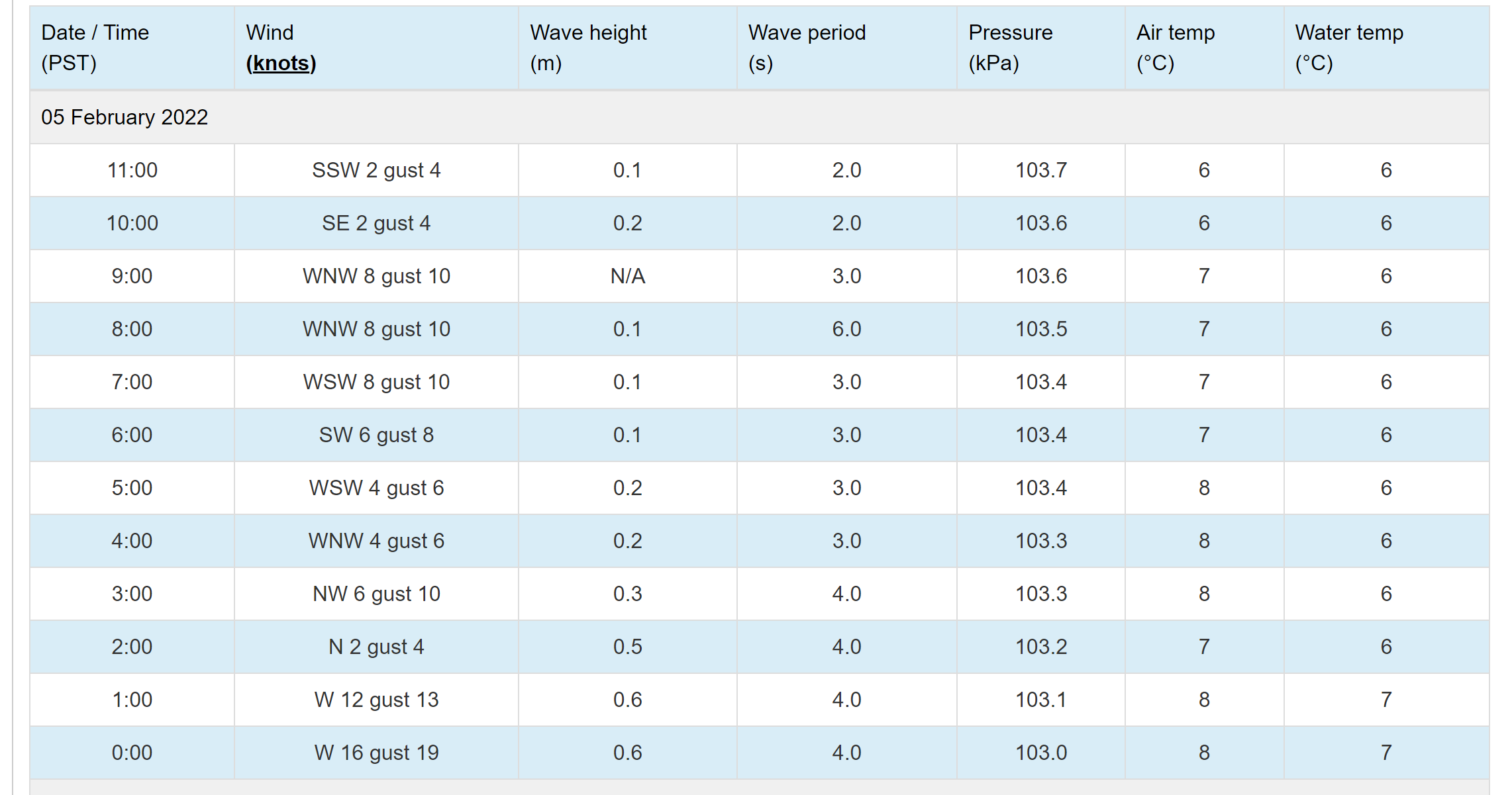
Once we know when we’re leaving, we have pre-departure checklists that we follow each time. Once is a housekeeping checklist, the other a systems checklist.
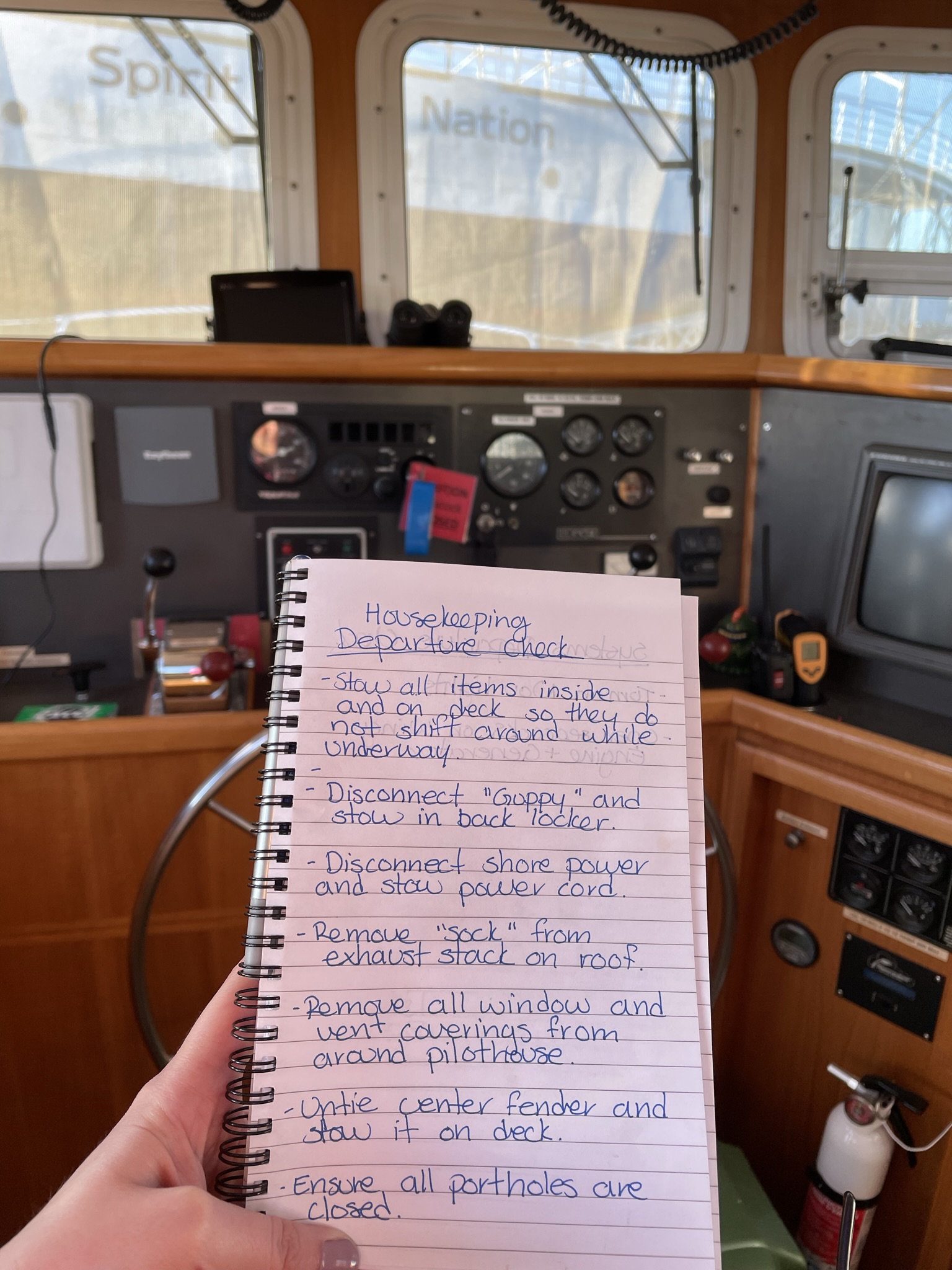
Housekeeping
- Stow all items inside and on deck so that nothing shifts around while we’re underway. This means clearing up the dishes, the soap and shampoo bottles, clearing nightstands, etc.
- Disconnect our sacrificial “guppy” anode from the stern and stow it.
- Disconnect the shore power and stow the power cord.
- Remove the sock from our exhaust stack.
- Remove all of the window and vent coverings and stow them.
- Untie the center fender and stow it on the deck (this one is in a spot that’s inaccessible from the boat while underway).
- Ensure all portholes are closed.
Systems
- Power up the switches on the power panel.
- Turn on all of the navigation systems – Radar, Plotter, GPS, Radio, etc.
- Turn the radios to channel 12 and channel 16 so we can start monitoring the harbor traffic for anything that might impact us.
- Turn on navigation lights.
- Power up and test the thrusters.
- Open the seacocks on the wing engine and the generator.
- Turn on the engine room blower fan.
- Perform engine room check which involves checking which fuel we draw and return, the coolant and oil levels, and a visual check of all of the filters, etc. (Matt usually does this step and would probably tell me I’m missing something…)
- Start the main engine and let it warm as we complete a final double check that everything is ready to go.
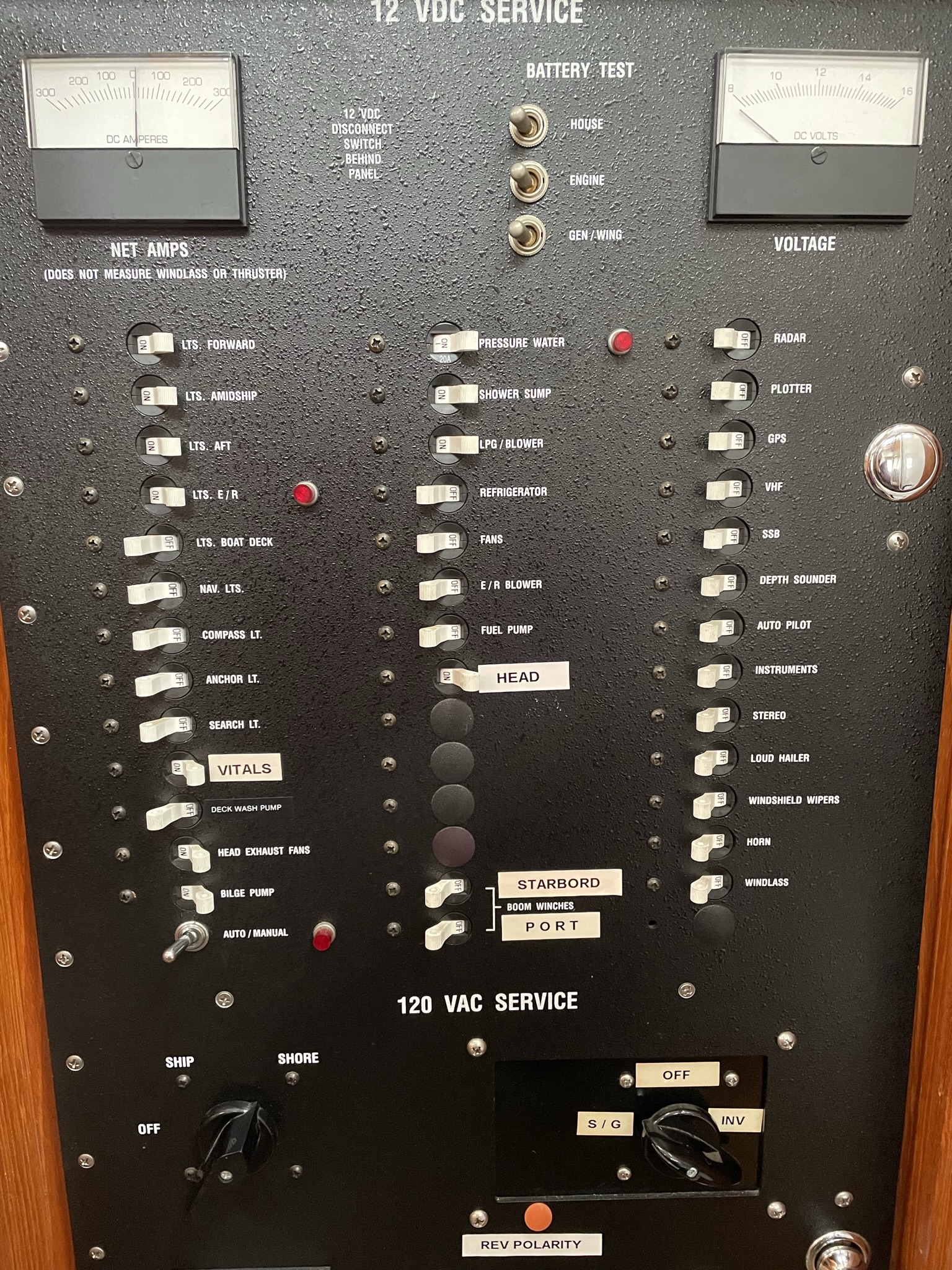
Once we decide to start moving, we get out our headsets so we can easily communicate over the engine noise. I get out onto the dock and start untying the lines, while Matt puts the boat in gear and gets ready to leave the dock. When we’re both prepared the final line comes off and I jump onboard as Matt starts to maneuver us out of our slip. I will stay on the back deck and call out the distances off the stern for Matt, as it’s a blind spot back there.
Once we’re free of the dock, I pull up the fenders and stow them, and tidy up and stow the lines away as well. Once that’s all done, join Matt in the pilothouse and we’re cruising!
It does take preparation and planning to have a good day on the boat, but it’s actually pretty quick now that we’ve done it a few times, and even with best intentions the unexpected can still happen. Always be prepared 🙂
